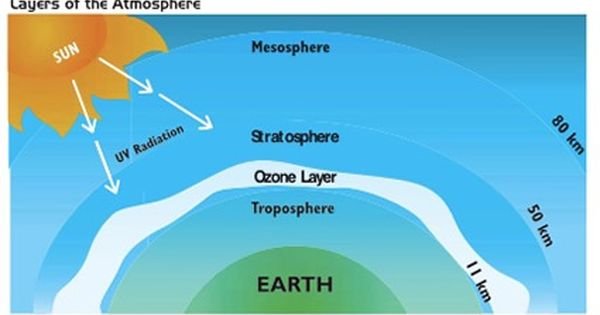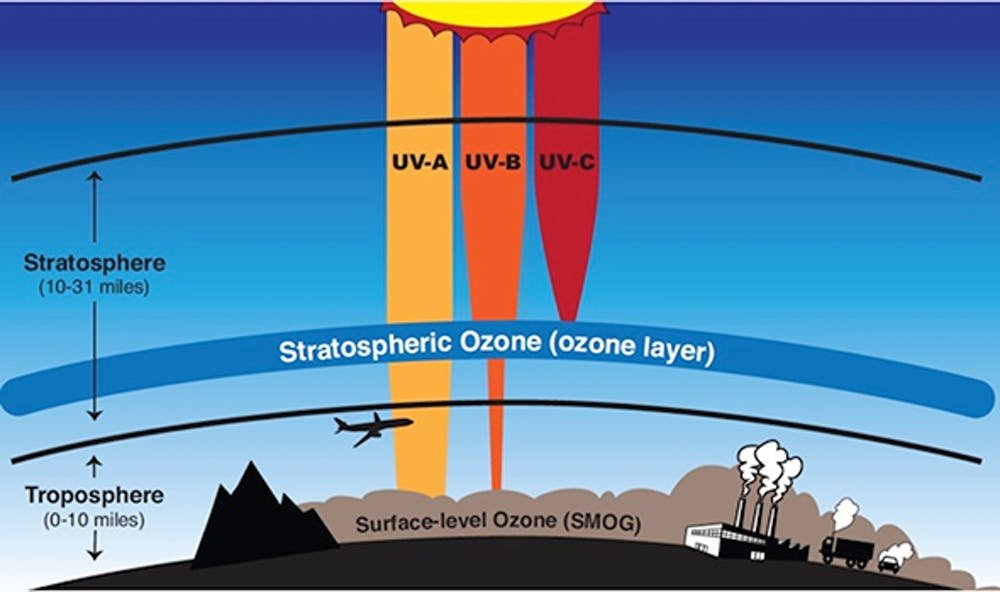Earth is surrounded by several complex layers of gases that make its atmosphere suitable for humans. These layers protect us from the harmful radiation from the sun and different celestial bodies. But now due to human activities, an entire one of those layers starts shrinking fastly and that layer is known as the stratosphere. Another change in our earth is started which is harmful to life on earth and to be looked upon seriously.
Shrinking of an entire layer: The stratosphere
An astounding new study has found that since the year 1980, the stratosphere layer has almost shrunk up to 400 meters that are 1,312 feet. The local decrease in this layer has been told earlier but this is the first time that this situation is reported on a global scale.
University of Vigo Earth physicist Juan Añel told Damian Carrington at The Guardian, “It is shocking, this conveys to us that we are already messed up with our atmosphere up to 60 kilometres.”
The stratosphere layer encloses around 20 to 60 kilometres above us, thus it covers another atmospheric layer (that is troposphere) which helps us in breathing. It also contains a very important ozone layer which we have already been affected by our greenhouse gases. This situation is very dangerous.

Due to collective global efforts, we are succeeded in managing the depletion of the ozone layer. Thus a hole in the ozone layer is created above the Antarctica region, which is reduced to much extent. Our emissions of harmful gases have already caused dangerous impacts on earth.
Peter Pisoft, an atmospheric physicist at Charles University, with his colleagues, used climate models and satellite observations since 1980, to measure the rise in carbon dioxide levels, rather than earlier doubtful ozone depletion, resulting in stratosphere shrinkage.
His team wrote in their paper that they showed that stratospheric shrinking is not only a response to cooling because changes in both tropopause and stratopause pressure equally contribute.
They further explained that the warming of the earth due to greenhouse gas emissions causes the troposphere layer to expand and thus it squashing the stratosphere layer above it.
Due to this, there is the addition of carbon dioxide in the stratosphere causing its combination of gases to cool and thus to move closer, (thus the opposite effect this process has on the troposphere) shrinking the entire stratospheric layer.
Anel conveyed to Anadolu Agency that in this whole scenario of climate change, the earth’s stratosphere layer can lose 4 per cent of its extension (vertically that is 1.3 kilometres) from 1980 to 2080.
How is this happening?
The stratosphere contains ozone and molecular oxygen which protect us from the sun’s UV radiations, most harmful sunlight with wavelengths up to 300 nm. In this layer temperature increases with an increase in altitude (which is opposite to the troposphere beneath it), this results in stability of the layer of gases. Thus when weather changes aircraft can retreat here, but this stability also concludes that any chemical that reaches the stratospheric layer tends to remain there.

If the changes that are predicted come true then their extent to affect satellite, GPS, and radio communication is large enough, Pisoft and his team warned.
Thus it may also change the height distribution of absorbing and emitting molecules and also bring change in how the stratosphere absorbs radiation and its overall working phenomenon. There is still very much to figure out how these impacts can occur.
It is only the latest discovery of an astonishing climate crisis in our world that has to be looked upon seriously. Recently other findings showed that the melting of glaciers causes the weight redistribution on earth that has shifted the earth’s axis.
Paul Williams an atmospheric scientist at the University of Reading says, “After decades of research it is noticeable that we are still figuring out the new aspects of climate change” who was not involved in this study.
He further told The Guardian that this made him wonder about what other impacts and changes our emissions have on the atmosphere that we have not discovered yet.

2 Comments
Pingback: NASA will Blast nearly 128 Glowing Baby Squids and 5000 Tardigrades into space - Craffic
Pingback: Ozone Layer Hole over south pole is now even bigger than Antarctica - Craffic